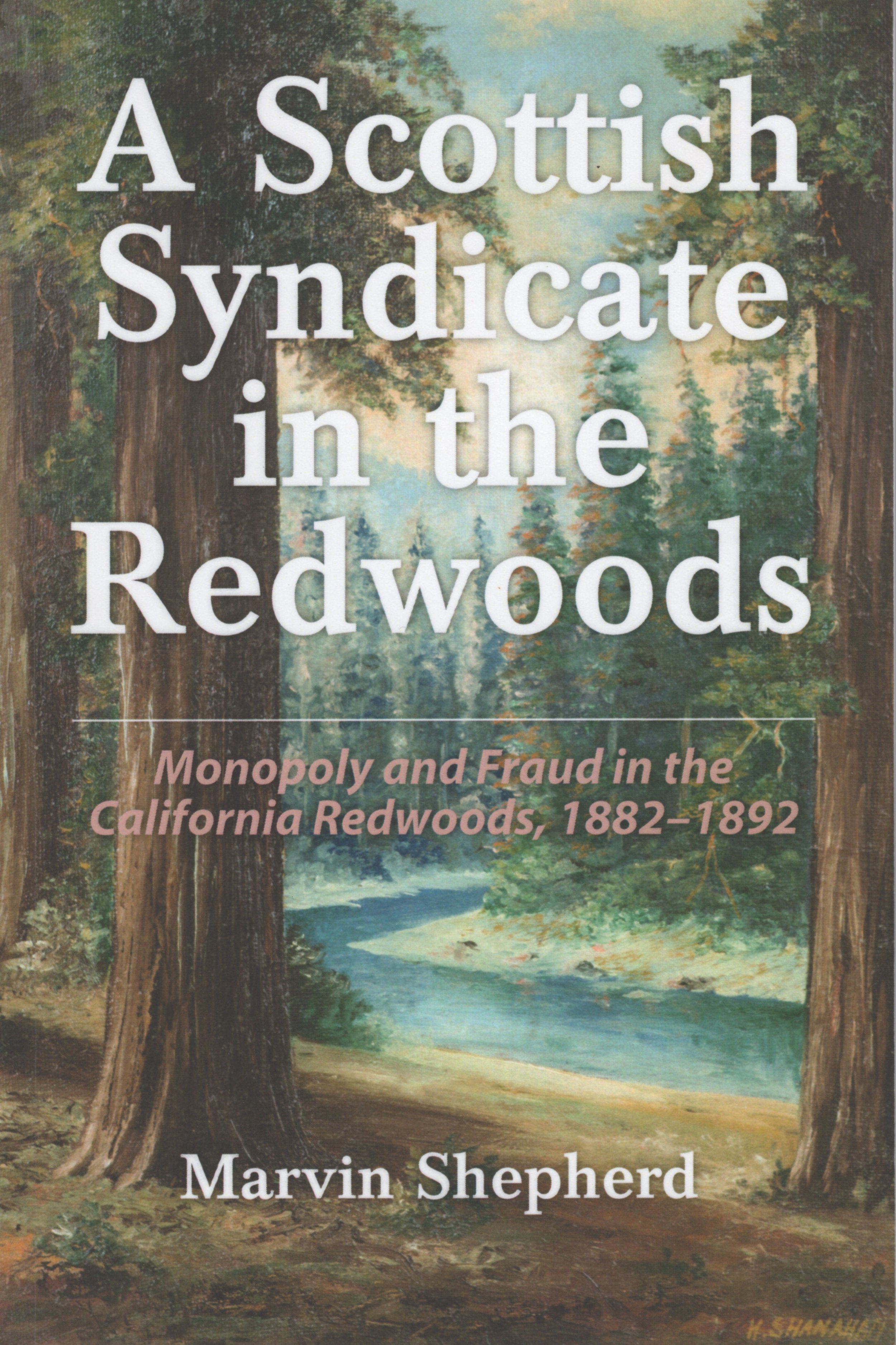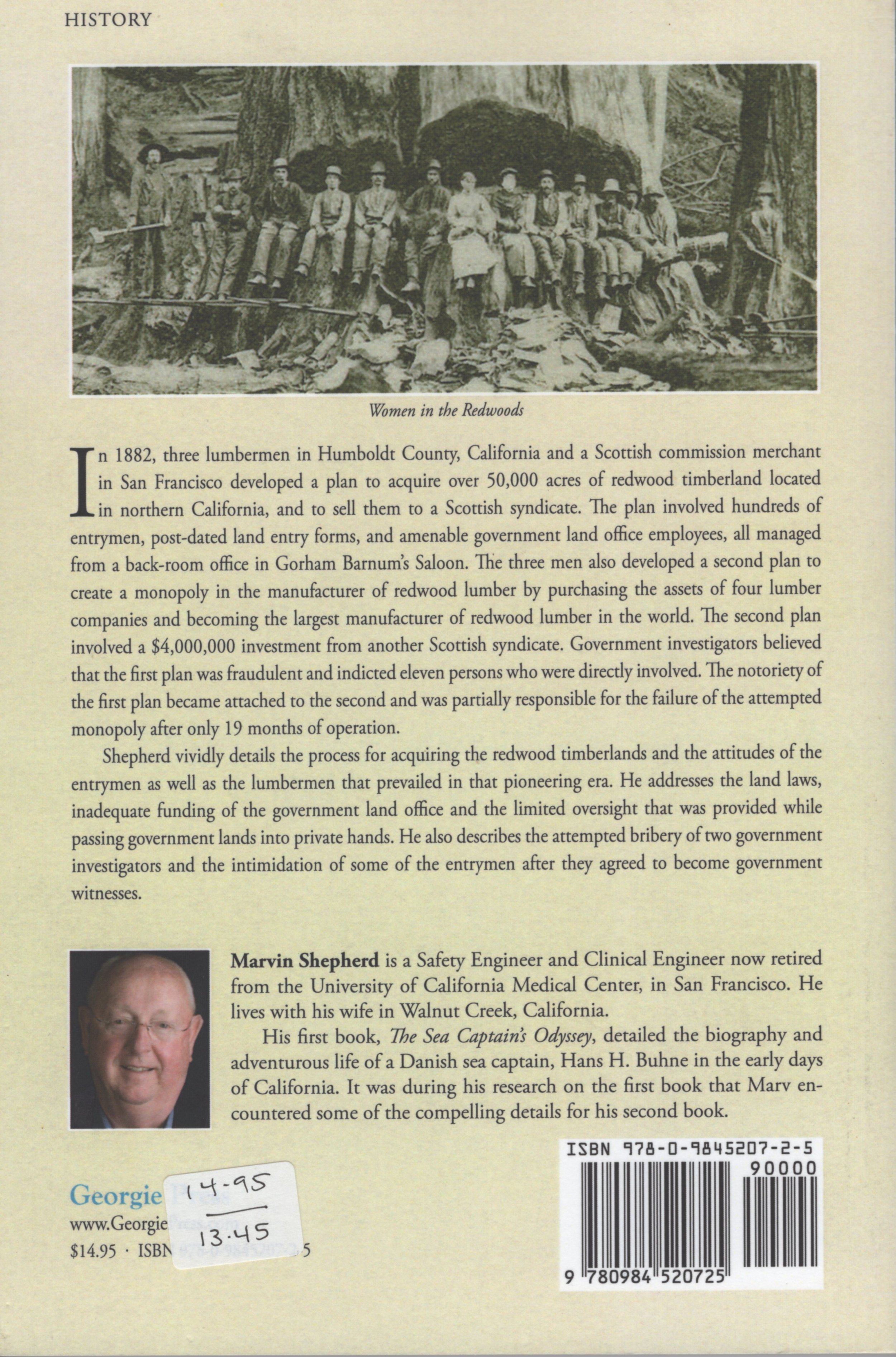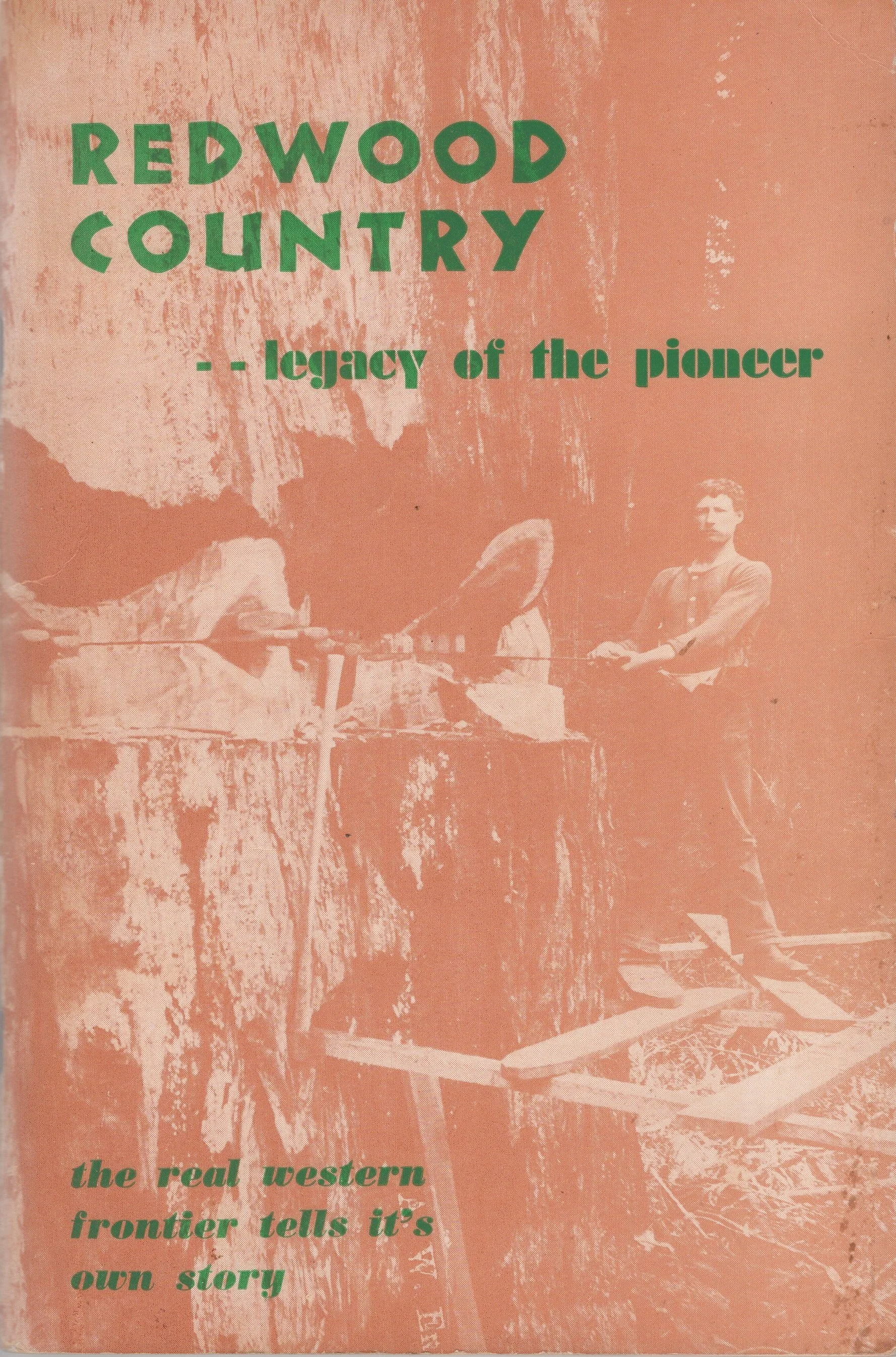Southwest Humboldt Hinterlands
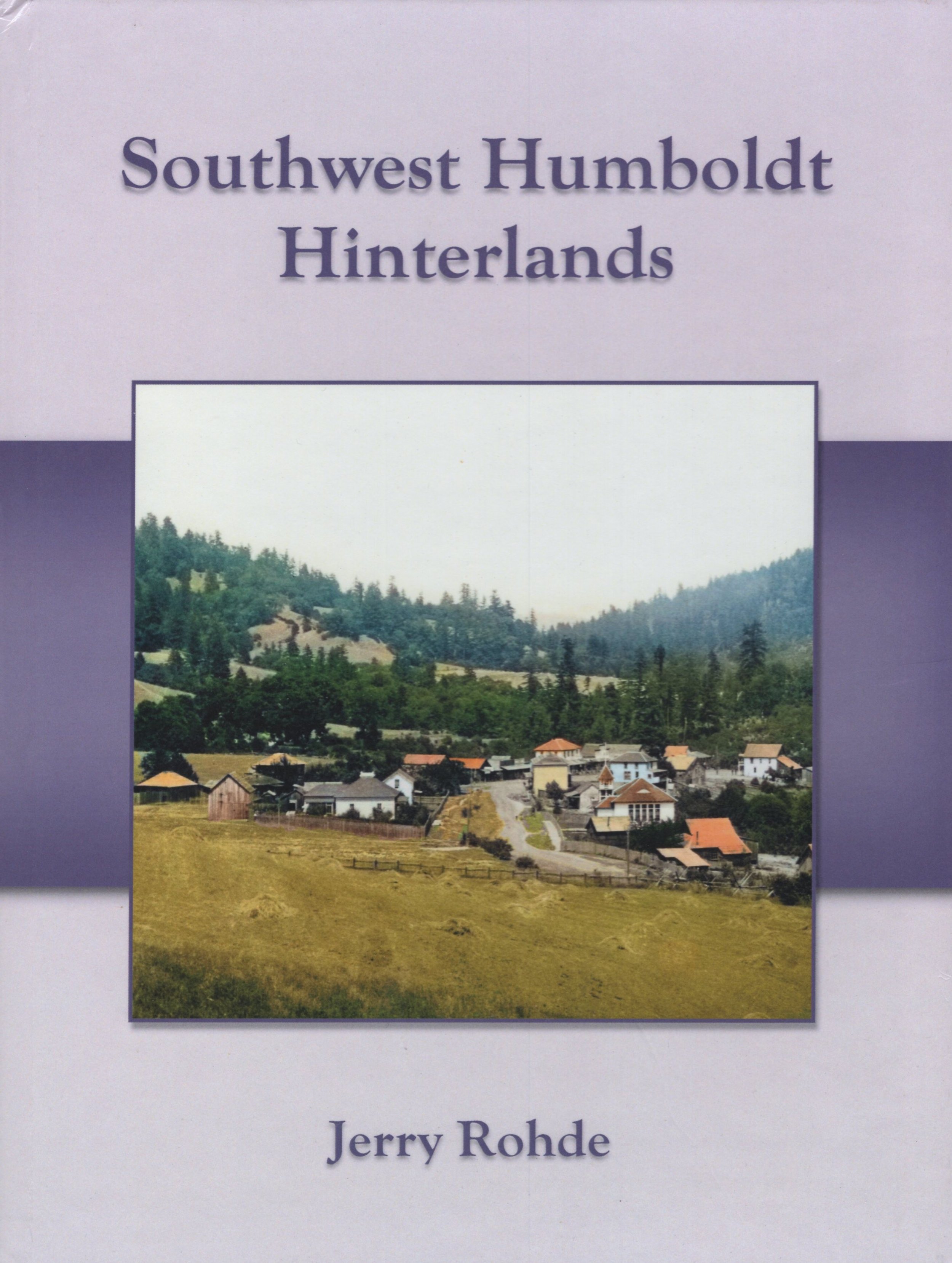
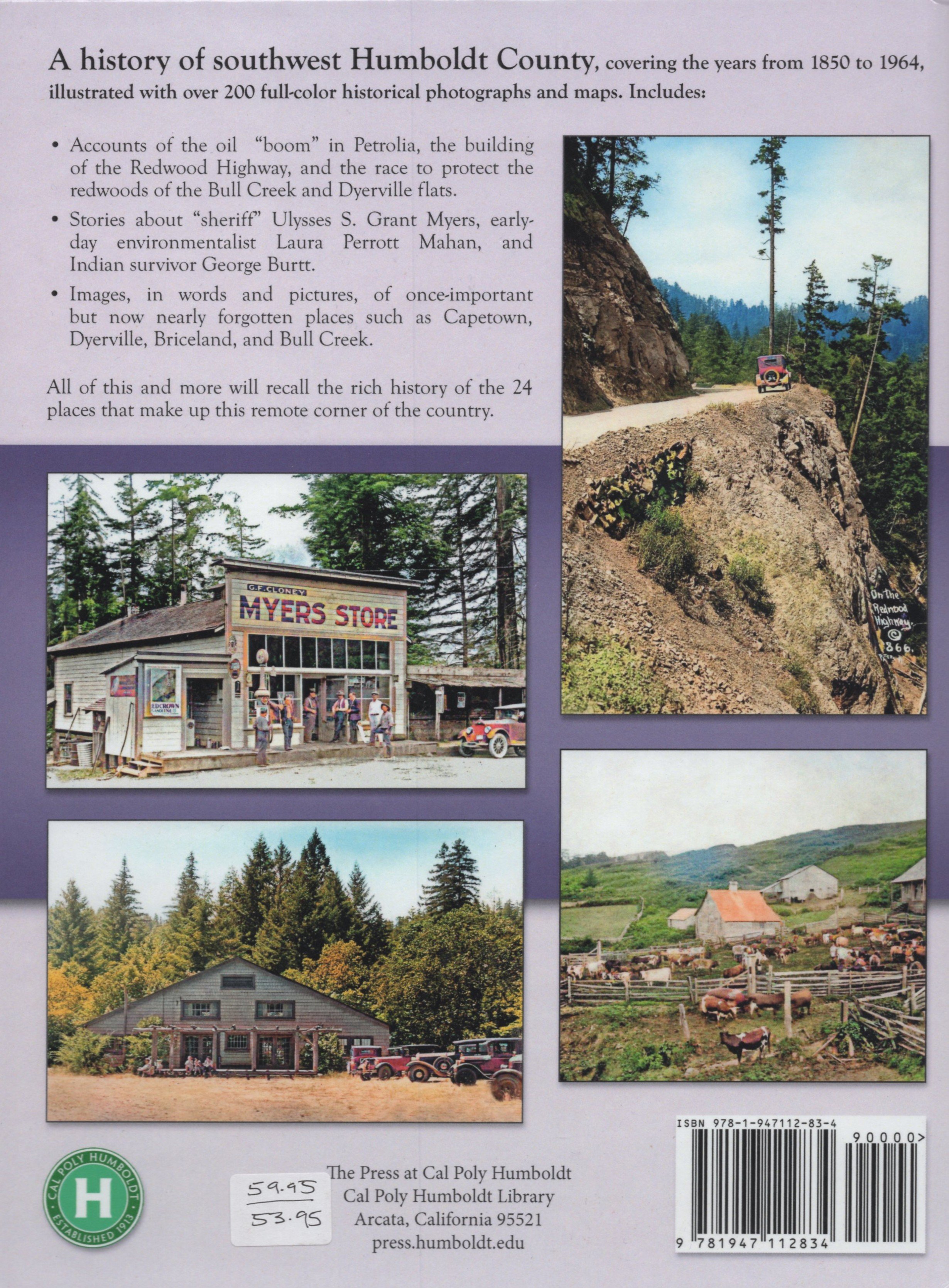
Southwest Humboldt Hinterlands
When looking at the books for sale at the Historical Society bookstore, there is one author's name appearing again and again -- Jerry Rhode. Not only is he a prolific and entertaining writer, he is a dedicated historian whose perception is broader and deeper than that of many. His two most recent books are prime examples of this. Southwest Humboldt Hinterlands and Southeast Humboldt Hinterlands take us into less known and less written about parts of our county. Reading them takes us on a road trip to more obscure parts of our past. And like most road trips, they open our eyes to new places and viewpoints, We return from such trips refreshed and glad that we went. It's the same with these "Rhode trips."
Both books follow the format of going to many individual places and dwelling on historically interesting events and people. In the Southwest Hinterlands, we begin with accounts of the Bear River area: conflicts between the early settlers and the native people, the establishment of ranching, the immigrants of various nationalities, and families, such as Russ, that left big marks on Humboldt history.
In recounting other communities -- such as Whitethorn, Briceland, Garberville, Sproul Creek, Phillipsville and Redway, similar topics are covered but with local variants. More coastal communities like Shelter Cove, Cape Mendocino and Capetown add maritime subjects like shipping and shipwrecks. With some communities, light is shed on specialties such as Petrolia for oil, Ettersberg for apples, and the Mattole area for tanbark. Dyerville, Miranda, Richardsons Grove and Garberville additionally reveal the growth of tourism, transportation and environmentalism.
All of the communities touched on in this book are given unique attention enhanced by the liberal use of historic accounts and sidebars highlighting several communities' role in special topics such as Asian exclusion. The book is filled with useful and very readable maps and numerous historic photographs. Many earlier photos have been skillfully colorized, and although some people may argue with the academic validity of the process, these do lend a colorful vivacity to this large enthralling book.
As for historic credibility, the extensive end notes and listed sources at the end certainly provide that. Being curled up with one of these books, with their touches of warmth and humor, is certainly a pleasant way to learn about the hinterlands of our diverse county.


